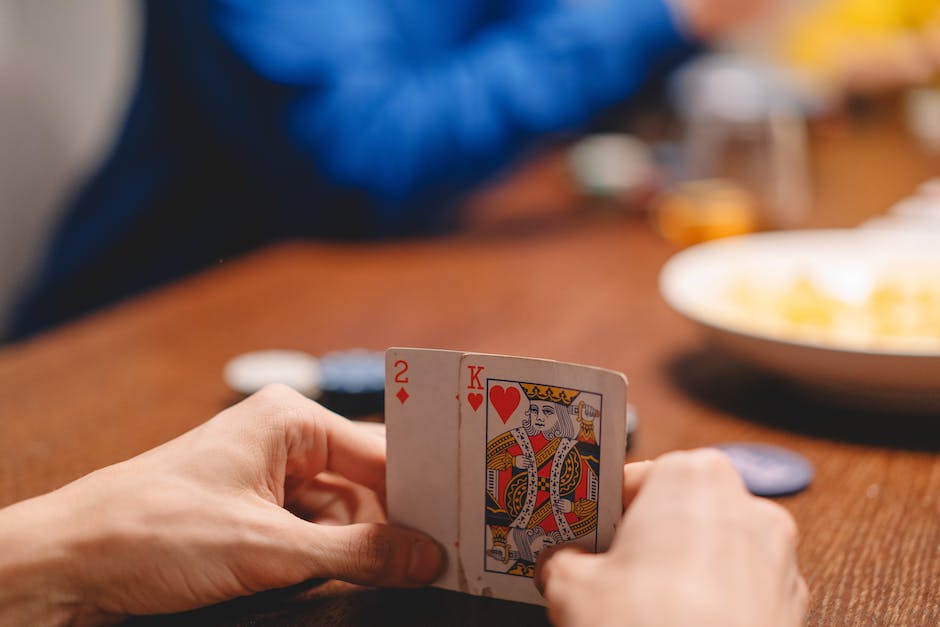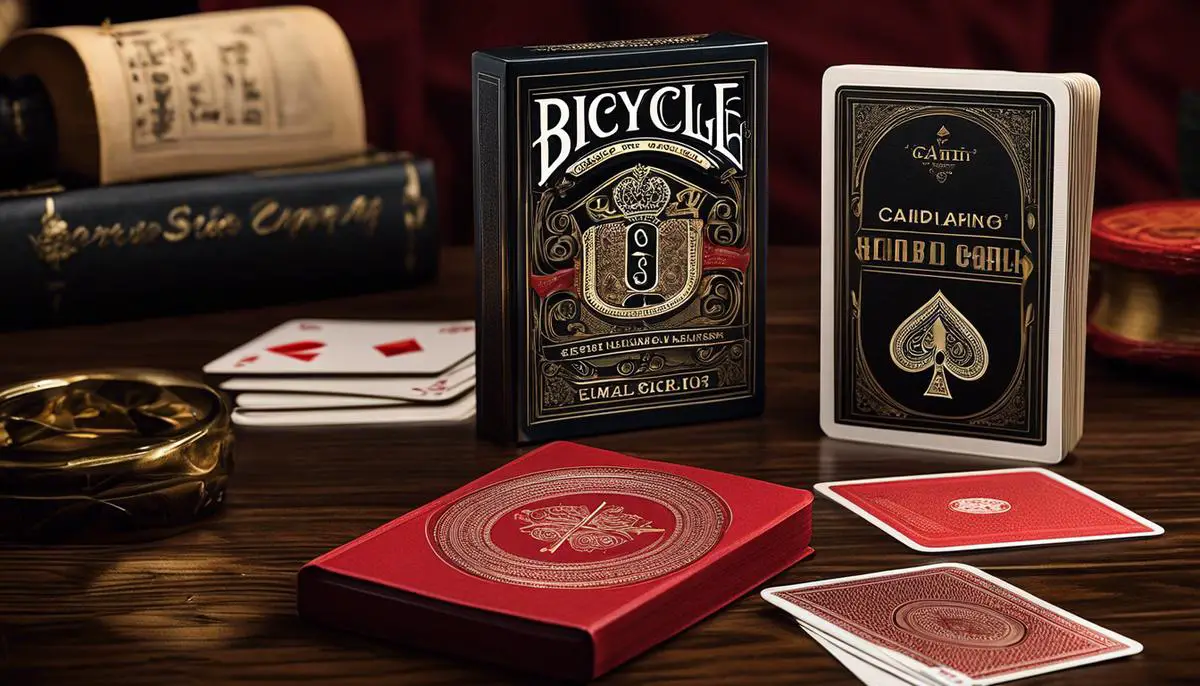Immersing oneself in the realm of games is an enriching experience for enthusiasts, even more, it is an avenue to garner insights and strategic acumen. On this path, Bicycle card games provide an exciting and complex venture that captivates both the mind and heart. This essay on the Bicycle card game offers enthusiasts like you an opportunity to dive deeper into its intricacies, from understanding the foundational rules to analyzing and applying different strategies, leading ultimately to consistent practice sessions to further hone your skills. Whether you’re just starting out on your bicycle card journey or looking to refine your knowledge, this comprehensive guide will facilitate a more nuanced comprehension of the game.
Understanding the Basic Bicycle Card Rules
Deciphering the Axioms of Bicycle Card Games: A Journey in the World of Shuffling
For anyone who’s been dazzled by the buzzing world of playing cards, diving into the bread and butter of Bicycle card game rules is a thrilling experience. Don’t feel overwhelmed. This is a pursuit of joy and challenge! Like many seasoned enthusiasts will tell you, all it takes is a bit of perseverance, a dash of passion, and of course, a love for the camaraderie of card games to become an expert.
Why Bicycle card games, you wonder? Well, for starters, they’re not just games, but gateways into a world filled with fun, excitement, strategy, and chance – all amazingly packed in a compact deck.
Now, the question is, how to decode these Bicycle card game rules?
Here’s a quick rundown where we shall uncover the basic principles of the most popular Bicycle card games, getting you ready to sit at that card table with confidence.
Understanding The Structure of The Deck:
First and foremost, know your deck. A standard Bicycle deck has 52 cards, divided into four suits: Hearts, Diamonds, Clubs, and Spades. Each suit further splits into 13 ranks, running Ace through 10, and ending with the “face cards” – Jack, Queen, and King.
Ace can either score higher than a King or lower than a two, depending on the game you’re playing. The Jack ranks 11th, the Queen 12th, and the King – aptly – 13th.
The Basics of Card Values:
Assigning suit values comes next. In the classic order of suits, Hearts rank the lowest, followed by Diamonds, Clubs, and finally, Spades. This is important in games like Bridge where suit rankings determine the gameplay flow.
In Poker variants, all suits are usually considered equal, and it’s the card ranks that will govern whether you walk away a winner.
Game Specific Rules:
Once you’ve got the hang of the deck structure and the basics of card values, it’s time to dive into the rules of specific Bicycle card games. Let’s brief you on three popular ones:
- Poker: Poker is a betting game. The goal is to either bluff and compel everyone else to fold off their cards or to have the highest-ranking hand when the final bet is called. The universally accepted hand ranks, from highest to lowest, are: Royal Flush, Straight Flush, Four of a Kind, Full House, Flush, Straight, Three of a Kind, Two Pair, One Pair, and High Card.
- Blackjack: Blackjack winners are determined by who gets closest to a total of 21 points, without going over. Placed against the dealer, you’re aiming to have a higher hand, subject to that 21-point ceiling.
- Solitaire: Solitaire often serves as a tranquil hobby, but don’t let that placid demeanor fool you. The underlying goal is to move all cards of each suit in ascending order from Ace to King onto the foundation piles.
With these rules under your belt, you’re more than ready to begin your journey in the world of Bicycle card games. Every Bicycle card game offers exciting opportunities for strategic thinking and social interaction. Get your game face on, crack open a fresh deck, and embark on this timeless journey of skill and chance. Remember, the only wrong way to play a hand is to not have fun doing it! So, enjoy the game, and may the best hand win.

Strategies in Bicycle Card Game
Mastering Bicycle Card Game Strategies: The Key To Victory
Ready to take your Bicycle card game skills to the next level? Once you’ve got a solid grip on the structure of the deck, the basics of card values, the rules of various games, and the vital role of skill and strategy, you’re primed for advanced play. The thrill of the game and the friendly competition only amplify when you add a strategic edge to your game.
Raising The Stakes With Poker
When it comes to Poker, playing your hand right isn’t simply about the cards you’re dealt. It’s about knowing when to bluff and when to fold. Bluffing can be an effective strategy if used correctly. If you’ve been consistently tight, an occasional bluff can take your opponents by surprise. Be aware though, if you bluff too often, your opponents will catch on.
Likewise, folding can be equally strategic. It’s vital to recognize when you don’t have a winning hand and to concede gracefully. Since Poker is a game of endurance, saving your chips for a better round can often be more advantageous than forging ahead with a weak hand.
Busting The Odds In Blackjack
In Blackjack, the key to long-term success typically lies in understanding and taking advantage of the mathematical probabilities. Knowing when to hit, stand, split, or double down based on your hand and the dealer’s visible card can significantly increase your chances of winning. Also, card counting, while controversial, can be a useful strategy. It involves keeping track of the ratio of high to low-value cards left in the deck, further assisting in making game decisions.
Solitaire: A Game Of Patience And Strategy
For Solitaire gamers, understanding the game’s finer points can make or break your experience. Strive to keep your options open by only moving cards when absolutely beneficial. For example, it often helps to avoid emptying a tableau spot until you have a King ready to take its place. Moreover, turning the deck over one card at a time instead of three can also maximize your opportunities for moves.
Shared Card Strategies
Across games, one universal tip is to dive deeper into the power of observation. Paying close attention to your opponents’ behaviors, betting patterns, and potential “tells” can provide pivotal insights. In games like Poker and Blackjack, even the smallest non-verbal cues can reveal an opponent’s hand.
Moreover, the art of flexibility should never be underestimated. Being able to adjust your strategy on the fly based on a shift in the game’s dynamics can often distinguish a good player from a great one.
All in all, as you sail into these tactical waters, keep the love for the game at the forefront of your mind. The strategies aren’t simply tools for gaining the upper hand, they are pathways to further your appreciation, admiration, and enjoyment of the game. Dive in, paddle on, and let the tide of strategy take your Bicycle card game skills from fun to phenomenal.

Practicing Bicycle Card Game
Moving onto the next phase in perfecting your Bicycle card game skills, it’s all about getting hands-on experience. However, let’s be strategic about it.
Getting your hands on your Bicycle cards is one thing, but using them to hone and amplify your skills is another. That fine balance between applying learned strategies and promptly adjusting them in real-time situations becomes a crucial turning point. That’s where regular practice comes into the scene.
Setting a consistent practice schedule can have multifold benefits. Not only does it allow repetition of game-specific tactics, but it also aids in sharpening reactionary behavior. Remember, each game is a new opportunity to improve.
During practice sessions, it might be helpful to focus on a specific aspect of the game. For instance, one week it could be about thoroughly mastering the skill of bluffing in Poker. The next week might be about getting a stronghold on counting cards for Blackjack. Regularly shifting focus in this way ensures balanced skill development, avoiding the pitfall of being an expert in one area and a novice in another.
Of course, who can forget the importance of memory in card games? A seasoned Bicycle card game player will attest that remembering previously played cards and understanding opponents’ potential hands can be a significant game-changer. Hence, incorporating memory-enhancing exercises into practice routines could prove beneficial.
Now that we understand how crucial practice is let’s delve into a practical, fun side of it – playing with friends or family. Playing with a group not only makes the practice enjoyable but also extracts benefits such as learning to read opponents and understand their game approaches. A casual afternoon game of Solitaire could provide a valuable eye-opener on a new strategy.
Additionally, playing multi-deck cards games such as Canasta or Rummy can further improve card counting skills. Engaging in these games may feel overwhelming initially, but it provides a real litmus test for player’s capabilities, especially concerning memory and strategy.
Last but not least, letting go of predictability is key. Engage in spontaneous decision-making during games. This flexibility keeps opponents guessing and enhances adaptability during a game.
To conclude, our journey with Bicycle card games is all about looking beyond just rules and strategies. It’s about refining our understanding and reflexes through regular practice, making the game less about luck and more about skill. It’s about cherishing those shared moments around the table as well as the victories earned. It’s about enjoying the beauty of Bicycle card games with every shuffle, deal, draw, and discard. And remember, the learning never stops – every new game unfolds a new lesson. So, get that deck of Bicycle cards, gather your pals, and keep the games rolling!

Mastering the nuances of the Bicycle card game is a journey of strategic learning and consistent practicing. The artistry involved in the game not only captivates but also challenges you to wield your analytical prowess and decision-making capabilities. As your skills grow, let your strategies evolve with them and trust in the process. Remember, the strength of a player is not only gauged by the number of wins, but also their growth and adaptability in changing game scenarios. So, embark on this engaging journey with your deck of cards and embrace the endless possibilities that the Bicycle card game has to offer.
